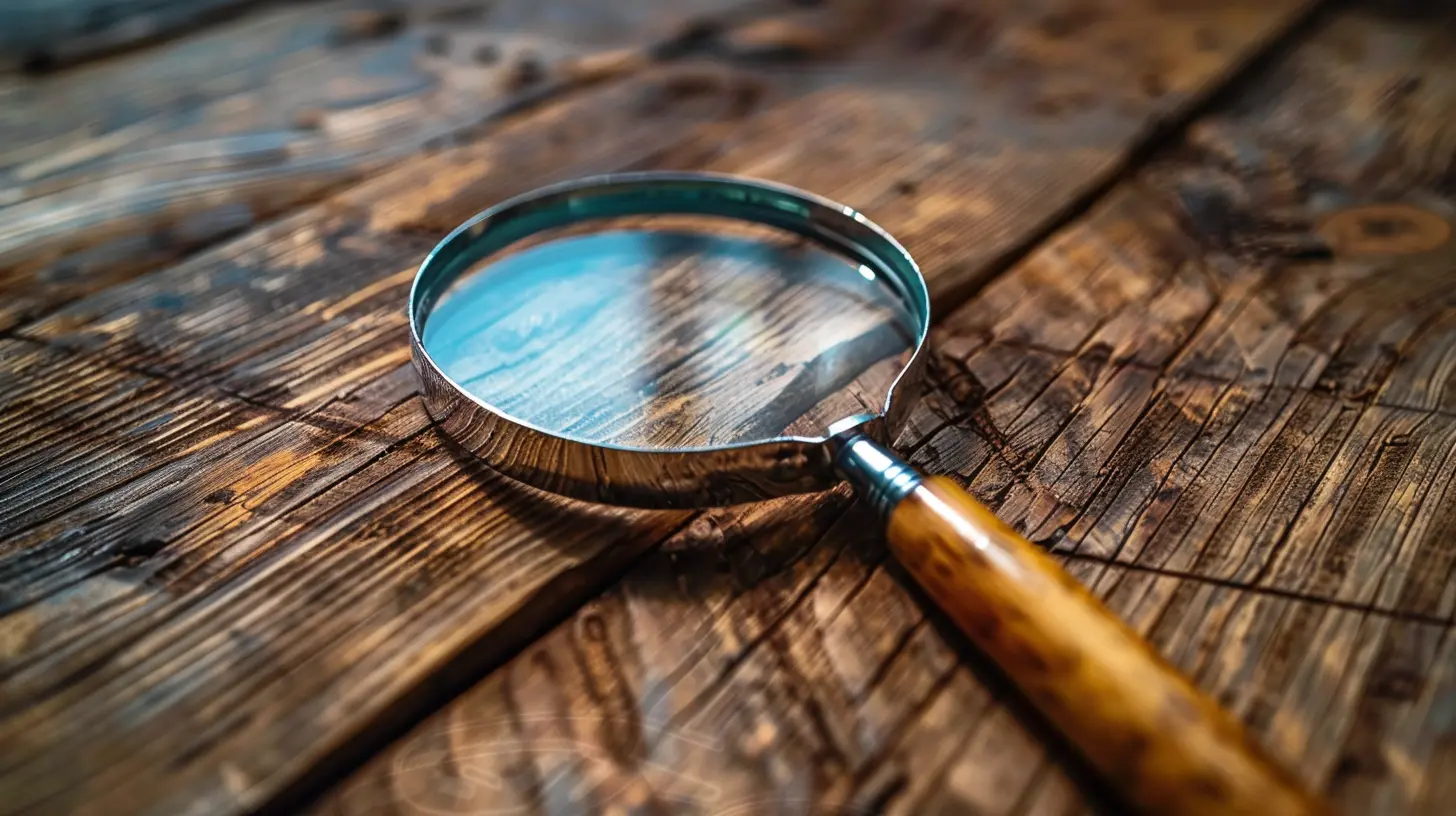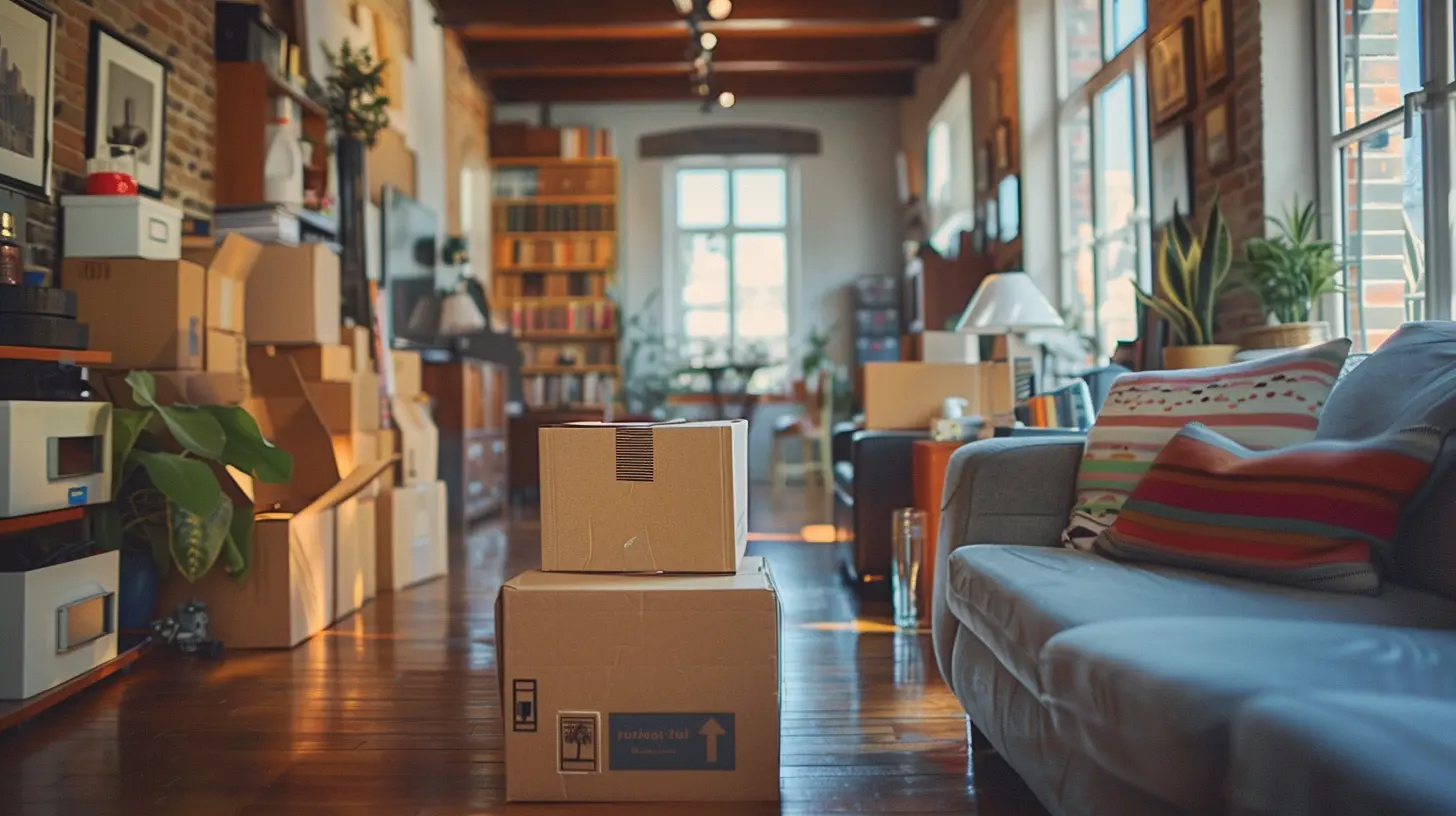How to Prepare for a Rental Property Move-In Inspection
15 April 2025
Moving into a new rental property is exciting, but before you get too comfortable, there’s an important step that shouldn’t be overlooked—the move-in inspection. This walkthrough with your landlord or property manager ensures both parties are on the same page regarding the condition of the rental before you officially settle in.
Why does this matter? Because a thorough inspection can save you headaches (and money!) when it’s time to move out. Without it, you might be blamed for damages that were already there.
So, how do you prepare for this crucial step? Let’s dive into everything you need to do to make sure you start your lease on the right foot.

Why Is a Move-In Inspection Important?
Before we get into the nitty-gritty, let’s talk about why this process even matters.A move-in inspection is a detailed review of a rental property's condition before a tenant moves in. The goal is to document any pre-existing damage so that you’re not held responsible when you move out. It protects both you and the landlord by setting clear expectations.
Skipping this step could mean losing your security deposit over issues that weren’t your fault. Nobody wants that.

What to Expect During a Move-In Inspection
Most landlords or property managers will schedule a move-in inspection with you before you officially take possession of the unit. During the inspection, you’ll walk through the space together and take note of any existing damages, wear and tear, or maintenance concerns.Some landlords will provide a checklist, while others may leave it up to you to document everything. Either way, your job is to be thorough.

How to Prepare for a Rental Property Move-In Inspection
1. Schedule the Inspection Early
Don’t wait until the last minute to set up your move-in inspection. Ideally, this should be done before you start bringing in furniture and boxes. You want a clear, unobstructed view of everything.2. Bring the Right Tools
Come prepared with:- A notebook and pen
- A smartphone or camera for photos and videos
- A flashlight (for checking inside cabinets and dark corners)
- A copy of your lease agreement (just in case)
Having these tools handy ensures nothing gets overlooked.
3. Inspect Every Room Thoroughly
Don’t rush through the inspection. Walk through each room with a critical eye. Here’s a breakdown of what to check:Walls, Ceilings, and Floors
Look for cracks, holes, stains, or scuff marks. Pay attention to water stains on ceilings, which could mean leaks.Doors and Windows
Do they open and close smoothly? Check for drafts, broken locks, missing screens, or cracked glass.Plumbing Fixtures
Run every faucet and flush every toilet. Any leaks? Slow drainage? Weird noises from pipes? These could be signs of bigger problems.Electrical Outlets and Light Fixtures
Test every light switch and electrical outlet. Bring a small device (like a phone charger) to ensure the outlets work.Appliances (If Included)
If your rental comes with a refrigerator, stove, dishwasher, or washer/dryer, make sure they function properly. Open them, run them briefly, and listen for strange noises.HVAC System
Turn on the heat and AC to make sure they work. If the air filters look dirty, ask for replacements.Cabinets and Storage Areas
Open every cabinet and drawer. Do they close properly? Any signs of pests? Musty smells could indicate mold or moisture issues.Exterior Areas (If Applicable)
If you have a patio, balcony, or yard, check for damages or safety hazards.4. Take Photos and Videos
Visual proof is your best friend. Take timestamped photos and videos of any damage you find—even minor issues. This prevents “he said, she said” disputes later on.Focus on details: scratches on wood floors, chipped paint, or even an old stain on the carpet. The more documentation you have, the better.
5. Fill Out the Move-In Checklist
If your landlord provides a move-in checklist, go through it carefully. If they don’t, consider making your own. List every issue, no matter how small.Be specific. Instead of writing “small stain in the living room,” describe it more precisely: “Quarter-sized coffee stain near the center of the living room carpet.”
6. Get Written Acknowledgment from Your Landlord
Once the inspection is completed, ask your landlord or property manager to confirm, in writing, that they acknowledge the documented issues. Ideally, both you and the landlord should sign off on the checklist.If they’re hesitant, send them a follow-up email with your notes and photos for record-keeping. This creates a digital paper trail.
7. Address Any Immediate Repairs
If the inspection reveals major issues—like a broken appliance, leaking pipes, or unsafe conditions—bring it up right away. Your landlord should handle necessary repairs before you move in.Get a clear timeframe for when repairs will be completed so you’re not waiting weeks without a working stove or functioning locks.

What to Do After Moving In
Even after the move-in inspection, keep an eye out for issues you may have missed. If you notice something within the first few days, report it immediately in writing. It’s better to bring up concerns early rather than waiting until move-out.Common Mistakes to Avoid
- Skipping the Inspection – Always do a walkthrough, even if the place looks spotless.- Not Taking Photos/Videos – Visual evidence is key when it comes to security deposit disputes.
- Rushing Through the Process – Take your time and examine everything carefully.
- Failing to Report Issues in Writing – Verbal agreements mean nothing if there’s no paper trail.
Final Thoughts
A move-in inspection might seem like an extra hassle, but it’s an essential step in protecting yourself as a tenant. Taking the time to thoroughly document the condition of your rental ensures that you’re not wrongfully charged for existing damages when your lease ends.So, before you start unpacking and settling in, grab your checklist, take those photos, and make sure everything is properly recorded. Your future self (and your wallet) will thank you.
all images in this post were generated using AI tools
Category:
Rental PropertiesAuthor:

Kingston Estes
Discussion
rate this article
8 comments
Damon Scott
Great insights! Preparing for a move-in inspection ensures a smooth transition and sets a positive tone for the new rental experience.
May 17, 2025 at 11:41 AM

Kingston Estes
Thank you! I'm glad you found the insights helpful. A thorough move-in inspection truly does make a difference in your rental experience.
Benjamin Murphy
Remember, a rental inspection isn’t a surprise party—no one wants dusty confetti or hidden sock monsters! So, channel your inner Sherlock and tidy up before the inspector’s magnifying glass makes an appearance!
April 30, 2025 at 7:10 PM

Kingston Estes
Great point! A clean and organized space goes a long way in making a positive impression during an inspection. Channeling your inner Sherlock is a fun way to remind everyone to stay prepared!
Zina Moore
Ah yes, because nothing says 'home sweet home' like passing an inspection that feels more like a pop quiz than a warm welcome. Good luck, future tenants!
April 24, 2025 at 6:50 PM

Kingston Estes
Thank you! A bit of preparation can definitely make the process smoother and more welcoming. Good luck to all future tenants!
Valerie Dorsey
As you step into the world of rental property inspections, remember: hidden secrets often lie within those four walls. A careful eye and keen intuition can uncover more than you expect—will you unveil the overlooked before they become your burden?
April 21, 2025 at 7:50 PM

Kingston Estes
Absolutely! Thoroughly inspecting the property can reveal potential issues before they become costly problems. Stay alert and proactive!
Rebecca McDougal
Great tips! Preparing for a move-in inspection ensures a smooth transition to your new home!
April 19, 2025 at 11:52 AM

Kingston Estes
Thank you! I'm glad you found the tips helpful for a smooth transition. Happy moving!
Orion Pacheco
Before your move-in inspection, channel your inner detective: check for hidden treasures, lurking dust bunnies, and that mysterious smell. Who knew adulting came with a side of property sleuthing?
April 19, 2025 at 3:33 AM

Kingston Estes
Great advice! A thorough inspection can uncover surprises that save you from headaches later. Happy sleuthing!
Sylvia McAleer
Great insights on preparing for a move-in inspection! I'm curious about how different landlords vary their expectations. Does anyone have tips on what to particularly watch for during these inspections? Thanks for sharing!
April 16, 2025 at 12:21 PM

Kingston Estes
Thank you! It's true that landlord expectations can vary. Key things to watch for include cleanliness, existing damage, and ensuring all appliances work. Taking photos can also help document the condition before you move in. Good luck!
Lanae O'Neal
This article is a fantastic resource for anyone stepping into the rental market! Preparing for a move-in inspection can seem daunting, but it’s all about attention to detail and proactive communication. I’m curious about what common oversights tenants make—any insights on that? Thanks for sharing such valuable tips!
April 15, 2025 at 3:51 AM

Kingston Estes
Thank you for your kind words! Common oversights include not checking for small damages, ensuring all appliances work, and forgetting to document existing conditions. Always take photos for your records—all great ways to protect yourself!
MORE POSTS

The Importance of Aligning With Like-Minded Professionals in Real Estate

Planning Your Move Around a Busy Lifestyle: Tips for Success

The Role of Curb Appeal in a Successful House Flip

Tech Cities: How Tech Hubs Are Changing Real Estate Trends

Exploring the Renaissance of Mid-Century Modern Historic Homes

Moving with Kids: How to Ensure a Smooth Transition